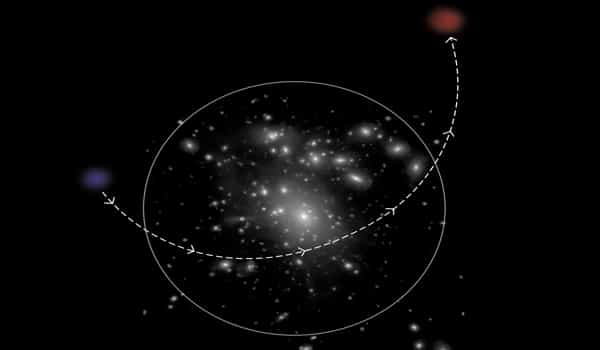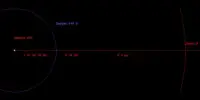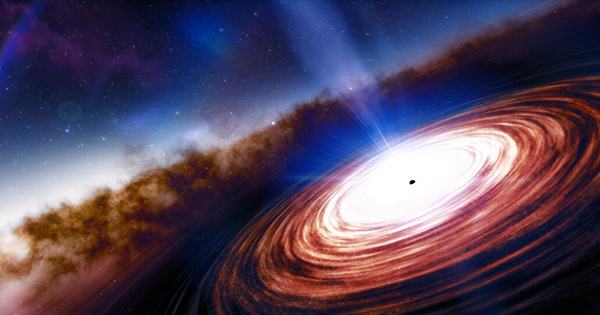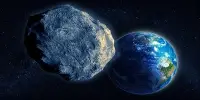An international team of astronomers claims to have detected a few ‘quenched’ UDGs in low-density environments in the universe using sophisticated simulations. A quenched galaxy is one in which no stars form.
Ultradiffuse galaxies, or UDGs, are dwarf galaxies with stars spread out over a large region, resulting in extremely low surface brightness and making them difficult to detect. Several UDG-related questions remain unanswered: How did these dwarfs get so long? Are their dark matter halos – the halo of invisible matter that surrounds galaxies – unique?
Now, an international team of astronomers led by Laura Sales, an astronomer at the University of California, Riverside, reports in Nature Astronomy that it used sophisticated simulations to detect a few “quenched” UDGs in low-density environments throughout the universe. A quenched galaxy is one in which no stars form.
“What we’ve discovered contradicts theories of galaxy formation because quenched dwarfs require clusters or group environments to have their gas removed and stop forming stars,” said Sales, an associate professor of physics and astronomy. “But the quenched UDGs we detected are isolated. We were able to identify a few of these quenched UDGs in the field and trace their evolution backward in time, demonstrating that they originated in backsplash orbits.”
Astronomers report it has used sophisticated simulations to detect a few ‘quenched’ UDGs in low-density environments in the universe. A quenched galaxy is one that does not form stars.
“What we’ve discovered contradicts theories of galaxy formation because quenched dwarfs require clusters or group environments to have their gas removed and stop forming stars,” said Sales, an associate professor of physics and astronomy. “But the quenched UDGs we detected are isolated. We were able to identify a few of these quenched UDGs in the field and trace their evolution backward in time, demonstrating that they originated in backsplash orbits.”
“Isolated galaxies and satellite galaxies have different properties because the physics of their evolution differs greatly,” she explained. “These backsplash galaxies are intriguing because they share properties with the satellite population in the system to which they once belonged, but they are now observed to be isolated from the system.”
Dwarf galaxies are small galaxies with a few billion to a few hundred million stars. The Milky Way, on the other hand, has 200 billion to 400 billion stars. Although all UDGs are dwarf galaxies, not all dwarf galaxies are UDGs. Dwarfs, for example, have a very wide range of sizes at similar luminosity, ranging from compact to diffuse. At a given luminosity, UDGs are the tail end of most extended objects. A UDG has the stellar content of a dwarf galaxy, which is 10-100 times the size of the Milky Way. However, its size is comparable to the Milky Way, resulting in the extremely low surface brightness that distinguishes it.

According to Sales, the dark matter halo of a dwarf galaxy has a mass at least ten times that of the Milky Way, and the size scales similarly. UDGs, on the other hand, defy this rule by having a radial extension comparable to that of much larger galaxies.
“One popular theory to explain this was that UDGs are ‘failed Milky Ways,’ meaning they were destined to be galaxies like our own Milky Way but somehow failed to form stars,” said José A. Benavides, the first author of the research paper and a graduate student at Argentina’s Institute of Theoretical and Experimental Astronomy. “We now understand that this scenario cannot account for all UDGs. As a result, theoretical models are emerging in which more than one formation mechanism may be capable of forming these ultra-diffuse objects.”
According to Sales, the new work has a dual value. First, the researchers’ TNG50 simulation successfully predicted UDGs with characteristics similar to observed UDGs. Second, the researchers discovered a few rare quenched UDGs with no known formation mechanism.
“Using TNG50 as a ‘time machine,’ we discovered that these objects were satellites several billion years ago but were expelled into a very elliptical orbit and appear isolated today,” she explained. According to the researchers’ simulations, quenched UDGs can account for up to 25% of an ultra-diffuse population of galaxies. However, based on observations, this percentage is much lower.
“This implies that many dwarf galaxies lurking in the dark may have gone undetected by our telescopes,” Sales explained. “We hope that our findings will inspire new approaches to surveying the low-luminosity universe, allowing for a complete census of this population of dwarf galaxies.”
The study is the first to resolve the myriad of environments required to detect UDGs, from isolated dwarfs to dwarfs in groups and clusters, with high enough resolution to study their morphology and structure. Following that, the researchers will continue their study of UDGs in TNG50 simulations to better understand why these galaxies are so long compared to other dwarf galaxies with the same stellar content. The researchers will use Hawaii’s Keck Telescope, one of the world’s most powerful telescopes, to measure the dark matter content of UDGs in the Virgo cluster, the closest galaxy cluster to Earth.
“Future telescopes, such as the Large Synoptic Survey Telescope or the Roman Space Telescope, will be operational in the next five to ten years with the capability of detecting many more of these intriguing UDGs,” Sales said. Sales received a National Science Foundation CAREER award and a NASA Astrophysics Theory Program grant to help fund the research.
















